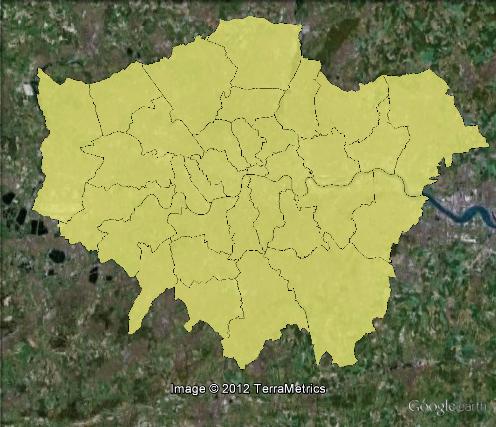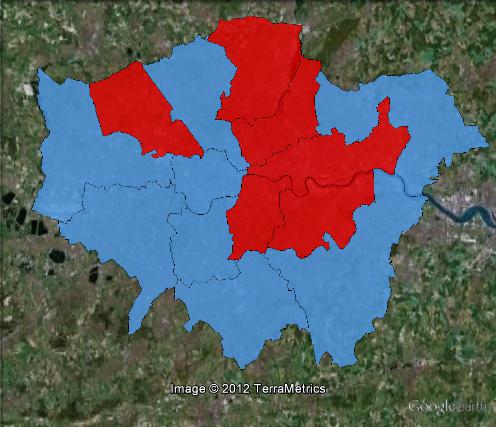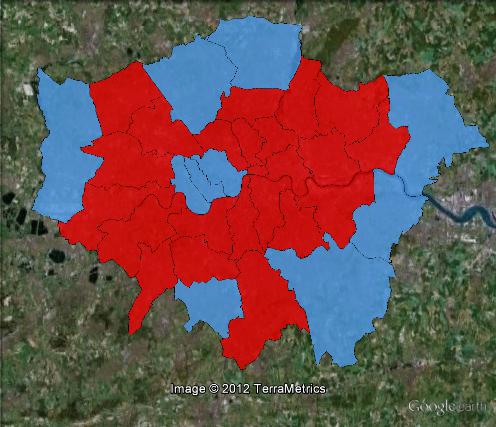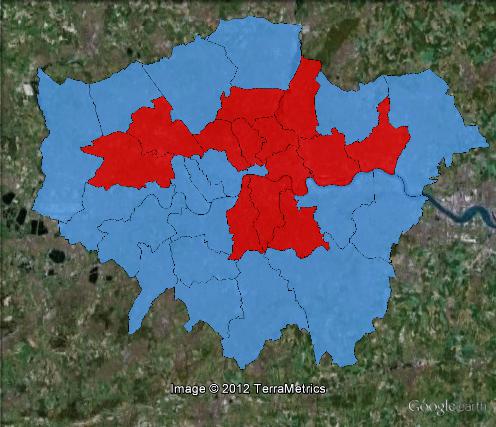Voters across the United Kingdom will be voting today in local elections, for local councillors and Mayors.
The system varies wildly – with some areas not voting, and with many parts of England covered by two different levels of local government. Scottish voters will be voting using the proportional representation, while English voters will be voting using first past the post. Some councils will be voting for a directly-elected Mayor, while others will be voting on whether their council should directly elect their Mayor in the future.
I’ll be focusing on the biggest of these elections, which is that for Mayor of London and the London Assembly.
The Greater London Authority (GLA) was created by the Blair Government in 2000, covering the entire London metropolitan region, which has a population of over 7.7 million people.
The Greater London region consists of 32 Boroughs, as well as the City of London (counted here as a borough). Each of these boroughs have their own elected council underneath the GLA.

The Greater London region and the boroughs were created in 1965, and from 1965 to 1986 they were led by the Greater London Council (GLC). The GLC came into conflict with Margaret Thatcher under its leader Ken Livingstone, and in 1986 the GLC was abolished. There was no London-wide level of local government from 1986 to 2000.
The GLA was established as part of the Blair government’s program of devolution, which also saw the creation of the Scottish Parliament, the Welsh Assembly and the Northern Ireland Legislative Assembly.
The Mayor is elected by a ballot of all voters in the Greater London region, using a modified version of preference voting. Voters can only mark two preferences. After primary votes are counted, all candidates other than the top two are eliminated, and preferences are distributed.
The London Assembly is elected using the Mixed Member Proportional, similar to that used in Scotland, Wales and New Zealand. 14 members are elected to represent single-member districts, using first past the post. A further 11 members are elected on Londonwide lists as a top up. Parties must win 5% of the vote to qualify for seats.

The first Mayoral election in 2000 was won by Ken Livingstone. Livingstone had served as Labour leader of the GLC from 1981 to 1986, but he was blocked from running as the Labour candidate for Mayor by Tony Blair. He won with 57.1% of the two-candidate vote.
The first London Assembly election saw the Conservatives win a majority of districts, winning 8 seats to 6 for the Labour Party. Overall Labour and Conservatives each won 9 seats, the Liberal Democrats won 4 and the Greens won 3.
Livingstone rejoined Labour in early 2004, and was re-elected as Mayor as the Labour candidate, with 55.4% of the two-candidate vote. Labour lost two of their seats on the Assembly, while the Greens lost one, with the Lib Dems gaining one and UKIP gaining two.

In 2008, Livingstone was challenged by Conservative MP Boris Johnson. Johnson had a high profile as a celebrity politician, and won 53.2% of the two-candidate vote. The Conservatives increased their seats from 9 to 11, while Labour also gained ground. The two former UKIP members lost their seats, while the BNP won a single seat.

After Boris Johnson’s four years as Mayor, Johnson is again facing off against Livingstone. Johnson has led in most polls. In mid-April his lead narrowed down to 51%, but has since grown out to 56%. While it isn’t certain who will win, Livingstone hasn’t run a strong campaign and Johnson has held a lead in all polls.
Another question in the polls will be about the number of seats the Conservatives will win. The Assembly may amend the Mayor’s budget by a two-thirds vote of the council, so the Conservatives need one third of the Assembly (nine seats) to block the other parties from changing the budget set by a Conservative mayor. The Conservatives won nine seats at the first two elections and eleven in 2008. If they were to fall back to eight seats they would be forced to work with other parties in the Assembly to pass their budget. It seems unlikely, but the unpopularity of the Conservatives may see Boris re-elected but see his party lose seats in the Assembly.
You can download Google Earth maps of London boroughs and London Assembly constituencies from the maps page.


